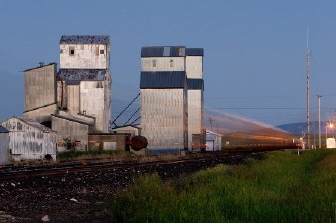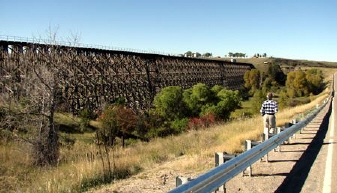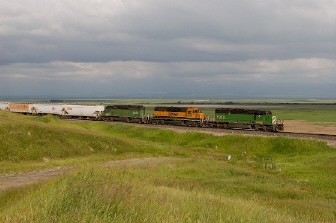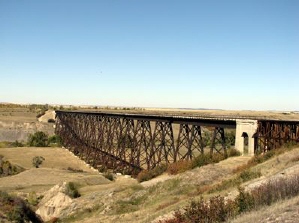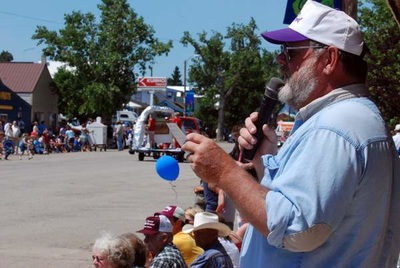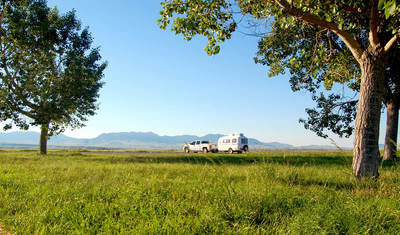Montana is a very large state and in the late 1800's it was a long way from any of the population centers of America. Before the arrival of the railroad any type of regular commercial travel was problematic at best. The first rail lines brought both people and goods into the state and provided a way to send minerals and other products to distant markets. Three rail companies operated rail lines through Montana that all connected the Pacific coast with cities in the Midwest. The line through southern Montana, the Great Northern Railroad was completed in 1883 and The Great Northern Railroad crossed northern Montana and was completed to Seattle in 1893.
The third line, the Milwaukee Road, crossed through central Montana. It was the last of the lines across Montana and was completed in 1908. The Milwaukee Road was the only one that was constructed without any land grants to reduce their development costs. However, the Milwaukee Road was developed in a fiscally sound fashion. It began as a regional rail line in the upper mid-west and only expanded as its profits justified.
This very impressive abandoned wooden trestle crosses Big Spring Creek northwest of Lewistown, MT. The terrain of central Montana is such that the railroads had to build many trestles and tunnels. This trestle is mostly built of wood but there are several "fire brakes", sections built entirely of steel, designed to keep a potential fire from burning the entire structure.
The Milwaukee Road began operations in Montana by running the steam engines common at the time. However, they soon began to believe that electric powered trains would be a better option. With the cheap electricity from the Columbia River hydro power plants company owners believed that electricity would be much cheaper. In 1915 the first section of the line switched to electricity and soon the entire line was electrified. The electric trains proved to be efficient and effective. They were dependable and operated well in the cold harsh conditions.
The third line, the Milwaukee Road, crossed through central Montana. It was the last of the lines across Montana and was completed in 1908. The Milwaukee Road was the only one that was constructed without any land grants to reduce their development costs. However, the Milwaukee Road was developed in a fiscally sound fashion. It began as a regional rail line in the upper mid-west and only expanded as its profits justified.
This very impressive abandoned wooden trestle crosses Big Spring Creek northwest of Lewistown, MT. The terrain of central Montana is such that the railroads had to build many trestles and tunnels. This trestle is mostly built of wood but there are several "fire brakes", sections built entirely of steel, designed to keep a potential fire from burning the entire structure.
The Milwaukee Road began operations in Montana by running the steam engines common at the time. However, they soon began to believe that electric powered trains would be a better option. With the cheap electricity from the Columbia River hydro power plants company owners believed that electricity would be much cheaper. In 1915 the first section of the line switched to electricity and soon the entire line was electrified. The electric trains proved to be efficient and effective. They were dependable and operated well in the cold harsh conditions.
|
One of the most interesting stretches of the Milwaukee Road was the "Jawbone" which is a 157 mile stretch between the cities of Lombard and Lewistown MT. This stretch began life as the Montana Railroad and was a private line built to serve the mining and agriculture communities in central Montana. The primary visionary that was responsible for the development of the line was Richard Harlow, an attorney from Helena MT. Harlow believed that rail service was vital to the future of central Montana and worked hard to achieve his vision. His first attempt to construct a line began and ended in 1893. However, in 1894 he once again began to work on a new rail line and this time he succeeded.
This very large, long trestle crosses the Judith River. It is mostly all steel but there are concrete and wooden sections at each end. Although this is a particularly large trestle there are many others scattered across central Montana. The Montana Railroad began construction in 1895 from Lombard which was a Northern Pacific station located about 50 miles east of Helena, MT. Construction ran east toward the Castle Mountains where gold fields created a demand for train service. In 1896 the line reached Leadborough at the southern end of the Castle Mountain mining district. Unfortunately, by the time the rail service arrived the gold was exhausted and Harlo decided to extend the line further east into the open lands found there. In 1900 the line reached the new town of Harlowton which was named after Harlo. After reaching Harlowton new rail line was laid toward the north and in 1903 the Montana Railroad was complete to Lewistown. In 1908, the Chicago, Milwaukee, St. Paul and Pacific Railroad was in the process of building their route to the west coast and they purchased the Montana Railroad in its entirety. Thus, the Montana Railroad became a part of what became the Milwaukee Road. The Milwaukee Road brought additional resources to the area and, although the main route only used the section of the line from Harlowton to Lombard, the tracks were extended from Lewistown to Great Falls as a secondary line serving that part of the state. Subsequently several spur lines were built that provided access to much of the country north of Harlowton. |
Abandoned buildings such as this stand in many places as testament to days gone by. At one time there were quite a few small towns and railroad stations in central Montana. Both the raised railroad bed and an abandoned grain elevator can be seen in the background.
By 1980 all of these lines had become abandoned and today the grade remains in most places as a testament to the peak of rail traffic. Losing the railroad meant significant change for this part of Montana. The Rail stations had become focal points for communities and grain elevators became major fixtures around which communities sprang up. Once the rail traffic slowed and trucking became the most common way to transport grain these small communities quickly lost their reason for existence and today most stand as modern ghost towns dotting the plains. Abandoned rail lines and modern ghost towns provide a lot of opportunities for people looking for an interesting glimpse into the Montana of years gone by. Some of the rail lines are easily followed by paved roads while others mostly cross private property and can only be accessed in remote places. Careful study of the widely available maps will show you lots of major trestles, tunnels and town sites that can be visited. Half the fun of exploring these areas is the discovery. Follow the tracks and look for grain elevators. In many places the abandoned elevators are easily visible from miles away. Very often there will be interesting sights to see around these sites. |
|
Once an anchor of a vibrant community, this abandoned church sits just across the street from the abandoned schoolhouse.
Harlowton is a great place to visit for some railroad history. The Milwaukee Road had a big presence in Harlowton and the community is trying to preserve the heritage. Be sure to visit the locomotive that the community has on display. This is one of the last two engines operating when the electric line was eliminated. It is hard to imagine the apparatus attached to the roof of the engine connected to overhead wire that supplied enough electricity to power a train. In Harlowton you can also visit the original train station at the south end of the town. Although it has been painted an unusual color, it is in good physical condition. Just to the south and east of the station is the round house that was in use for many years. This is a massive building complex that is not accessible to the public. Although it is not posted, it is used for storage and should only be explored from the outside. Before you leave the site be sure to check out the snow plow blade that has been placed near the station. This blade was originally left in Ringling but was moved to Harlowton. However, the massive concrete weights that were used to weight down the plow are still located alongside the abandoned rail line just on the edge of Ringling. |
Central Montana is filled with interesting railroad history. The rails had a very significant influence on the people and development of Montana. Exploring the towns and rail lines is a great way to explore and enjoy the Big Sky State.
More Info: http://www.oldmilwaukeeroad.com/content/brief/doc.htm or www.railroads-of-montana.com/
Source: www.montanahikes.com
Photo credits: Steve Eshom
(Steve has been a great contributor of photos; make sure to visit his website www.steveeshom.com)
More Info: http://www.oldmilwaukeeroad.com/content/brief/doc.htm or www.railroads-of-montana.com/
Source: www.montanahikes.com
Photo credits: Steve Eshom
(Steve has been a great contributor of photos; make sure to visit his website www.steveeshom.com)




